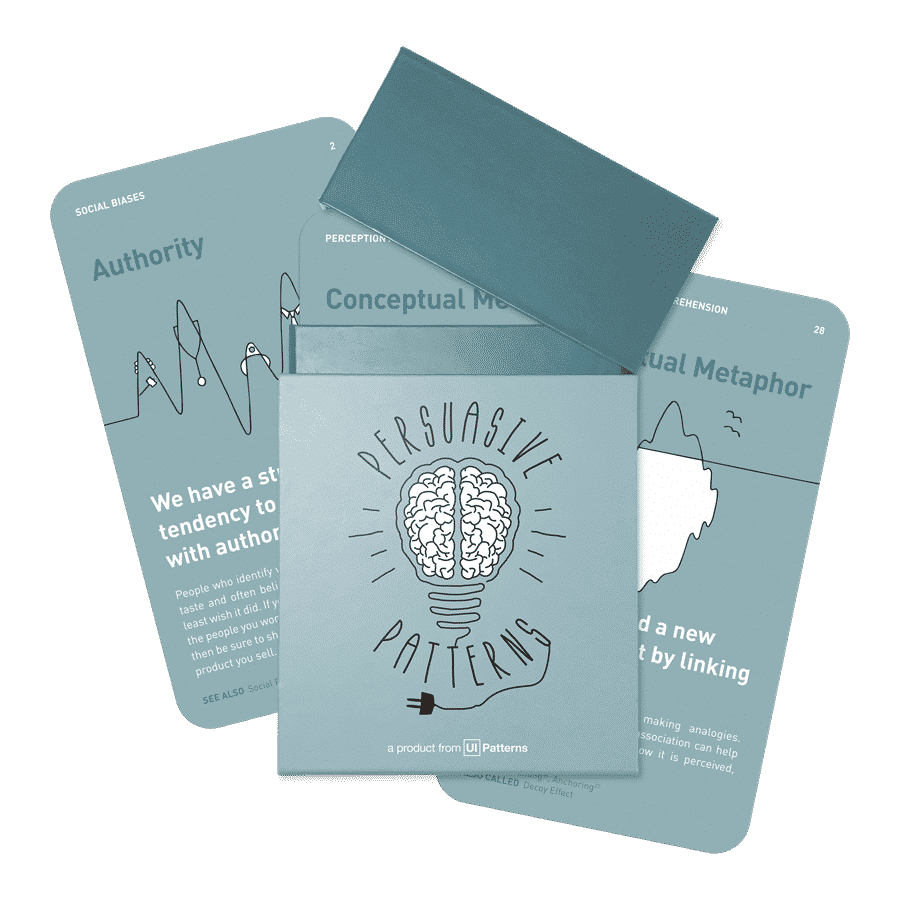Persuasive Technique
This persuasive pattern is part of the Persuasive Patterns printed card deck.
The Persuasive Patterns Card Deck is a collection of 60 design patterns driven by psychology, presented in a manner easily referenced and used as a brainstorming tool.
Get your deck!The Levels design pattern lets users progress through a series of stages or ranks that represent their development and achievements. Each level serves as a milestone that users reach through increased proficiency or completion of certain tasks.
Imagine yourself learning a new language. At first, it feels overwhelming. You struggle to conjugate verbs and memorize basic vocabulary. Discouragement might set in. However, as you persevere, you begin to grasp the fundamentals. You can introduce yourself, ask simple questions, and understand common phrases. This initial success motivates you to keep learning. You progress to more complex grammar structures and expand your vocabulary. Each milestone, from mastering basic greetings to formulating complete sentences, feels like a small victory. This sense of accomplishment fuels your continued learning journey.
This experience exemplifies the Levels pattern in action. The language learning process is segmented into stages, each representing a new level of proficiency. Overcoming the challenges of each level and witnessing your progress motivates you to continue learning.
Bridging from the language learning example, consider a fitness app. Similar to the language learner who progresses through stages of increasing complexity, the fitness app might structure its program using a Levels pattern. The initial levels might focus on fundamental exercises, gradually increasing difficulty and introducing new routines as users progress. This staged approach makes the program less intimidating for beginners and provides a clear roadmap for fitness development. Unlocking new levels, often visualized through badges or progress bars, mirrors the sense of accomplishment achieved in language learning. The Levels pattern in the fitness app gamifies the exercise experience, motivating users to stay engaged and reach their fitness goals.
By segmenting the user journey and providing clear markers of progress, digital products can motivate users, promote continued engagement, and ultimately help them achieve their desired outcomes.
The study
Imagine a group of students divided into teams, tasked with learning a new software program. One group progresses through a traditional curriculum, while the other leverages a gamified approach featuring points, badges, and crucially, levels. Which group do you think demonstrates higher engagement and learning outcomes? Studies by Kapp (2012) revealed that the gamified group, motivated by the “Levels” pattern and its inherent sense of achievement, displayed significantly higher engagement and learning outcomes compared to the traditional learning method. Kapp’s study highlights the effectiveness of gamification in educational settings, with findings suggesting that students in the gamified group were more motivated and engaged in the learning process.
Kapp, K. M. (2012). The gamification of learning and instruction: Input, process, and output. Advanced Learning Technologies (ALT), 1(2), 29-53.
The concept of using levels to gauge and communicate progress in user engagement is deeply rooted in psychological and behavioral theories. Early applications can be traced back to B.F. Skinner’s concept of operant conditioning (Behavioral Psychology) in the 1950s. Skinner observed that reinforcing desired behaviors with rewards increased the likelihood of those behaviors being repeated. The Levels pattern echoes this concept by providing incremental rewards (badges, points) upon completing levels, thus reinforcing continued engagement with the system.
This pattern leverages the fundamental human drive for achievement and recognition, providing users with a clear path of progression. It helps to structure user experience in a way that is measurable and motivating, offering tangible proof of advancement and encouraging continued engagement.
By dividing the user journey into distinct levels, the pattern provides a clear roadmap for progress, fostering a sense of accomplishment and motivating users to continue their engagement. The visual representation of these levels, often through badges, progress bars, or leaderboards, offers a tangible marker of achievement and fuels user motivation.
Playing on the power of goal setting and feedback loops to drive user motivation and engagement, this pattern aids in setting clear and achievable goals, as represented by individual levels, and provides users with a roadmap for progress. This fosters a sense of direction and accomplishment as users conquer each level, motivating them to continue their journey. Furthermore, the “Levels” pattern creates a feedback loop. By visually tracking progress through badges, points, or progress bars, users receive immediate feedback on their efforts. This feedback loop reinforces positive behavior and keeps users engaged by constantly reminding them of how far they’ve come and how much closer they are to achieving their ultimate goal
This pattern is closely aligned with several key psychological theories:
- Goal-setting theory
This theory posits that clear, well-defined goals that are challenging, yet achievable, are powerful motivators. Levels in a system serve as these goals, providing users with clear milestones to achieve. Each level acts as a mini-goal, driving users to continue engaging with the system in order to reach the next stage. - Operant conditioning
Developed by B.F. Skinner, this form of learning theory suggests that behaviors can be shaped by rewards or punishments. Levels utilize positive reinforcement—rewarding users as they progress, which in turn increases the likelihood of continued and enhanced engagement with the behavior that led to the reward. - Feedback Loops
Levels inherently provide continuous feedback, a critical element in both learning and motivation theories. As users progress from one level to the next, they receive immediate feedback that their efforts are paying off, thereby reinforcing their actions and encouraging them to continue.
These psychological principles suggest that structuring activities with levels can significantly enhance user engagement by tapping into their natural desires for achievement, feedback, and progress. Levels create a sense of accomplishment and progress, making the activity more engaging and enjoyable. This can be particularly effective in educational contexts where progression through levels can mirror the acquisition of skills and knowledge, or in fitness apps, where each level may represent higher benchmarks of physical achievements.
Designing products with Levels
Applying this pattern implies a progression system that is closely aligned with user goals, which not only enhances engagement but also drives users towards achieving significant milestones in a rewarding and structured manner.
Start by defining transparent and achievable criteria for each level within the system. This clarity is critical, as it helps users understand the requirements for progression and eliminates any ambiguity that might hinder user engagement. For instance, in an educational app, specifying that users must achieve a certain score or complete specific modules before advancing to the next level makes the progression criteria explicit and directly tied to their learning goals.
It is essential that the levels are intrinsically linked to the users’ broader objectives. In a fitness app, tying levels to significant fitness achievements—such as completing a set number of workouts or reaching a fitness milestone—ensures that each level achieved is both rewarding and meaningful, directly contributing to the user’s personal fitness goals.
Merging levels with a system of rewards that unlock with each new level achieved ensures continuous engagement. Each new level could unlock features such as exclusive content, abilities, or aesthetic upgrades that enrich the user experience. Rewards should feel like a natural extension of progression, not just arbitrary prizes, to maintain intrinsic motivation.
Incorporate visual elements such as progress bars or milestone indicators to link levels to progress toward their rewards. These tools provide immediate, understandable feedback on users’ current status and the journey ahead, making the process of achieving levels tangible and rewarding. The visual representation of progress not only motivates but also provides aesthetic pleasure, which can enhance the user experience.
Make it personal
Tailoring challenges within each level to match personal preferences and skill sets can significantly boost engagement. Personalization makes challenges more relevant and appealing, increasing the likelihood of users committing to the effort required to progress through levels.
By allowing users to share their achievements and new status on social media or within the platform, you can leverage social proof to enhance user engagement and organically promote your platform. This sharing acts as both a personal reward and a promotional tool for the platform, multiplying the impact of achieving each level.
Here are examples of how Levels could be implemented into your digital product:
- Onboarding levels
Break down the onboarding process into progressive levels, each focusing on a core feature or functionality. Completing each level unlocks new areas of the product and rewards users with badges or points. This gamified approach makes onboarding engaging and ensures users grasp essential functionalities before diving deeper. - Skill-Based levels
Implement a system where users progress through levels based on demonstrated skills. This could involve completing tutorials, passing quizzes, or achieving specific goals within the product. Leveling up unlocks new features or capabilities, rewarding users for their learning and mastery. - Challenge levels
Introduce periodic challenges tied to specific levels. These challenges could involve completing tasks within a timeframe, reaching a usage milestone, or collaborating with other users. Successfully completing these challenges can award bonus points, exclusive badges, or even temporary access to premium features, fostering a sense of accomplishment and friendly competition. - Mastery levels
Create advanced levels focused on in-depth exploration of the product’s full potential. These levels might involve complex workflows, data analysis tasks, or integrations with external tools. Conquering these mastery levels could unlock exclusive content, early access to new features, or recognition within the user community, appealing to power users and those seeking to maximize their product expertise. - Community-Based levels
Consider incorporating community elements into your level system. Users could gain experience points or level up based on helpful contributions like answering forum questions, creating tutorials, or participating in discussions. Leaderboards showcasing top-ranked users by level add a competitive aspect and incentivize users to actively engage with the community, fostering a sense of belonging and collaboration. - Tiered levels
This approach structures levels within broader categories or tiers. Imagine language learning levels categorized by proficiency (beginner, intermediate, advanced). Users progress through individual levels within each tier, culminating in a mastery demonstration to unlock the next tier. This provides a clear hierarchy and long-term goals. - Adaptive levels
These levels dynamically adjust based on user performance. Imagine a fitness app that personalizes workout difficulty based on a user’s progress. This ensures users are constantly challenged but not overwhelmed, maximizing engagement.
Ethical recommendations
While effective in motivating and engaging users, the “Levels” pattern carries potential risks when not used ethically. One major concern is the manipulation of user behavior through addictive design. If levels are designed primarily to keep users engaged for the sake of maximizing time on platform or consumption, this can lead to unhealthy usage patterns. Additionally, the competitive nature of levels can potentially discourage or demotivate users who find progressing difficult, leading to negative experiences and feelings of inadequacy or exclusion.
Another ethical concern is the transparency of how levels are structured and achieved. Without clear communication, users might feel misled about how much effort is required to progress, which can lead to frustration and a sense of unfairness, especially if levels are perceived as unattainable.
An overreliance on badges, points, or exclusive content at higher levels can create a shallow user experience. Users might become discouraged if they feel progress is solely measured by external rewards, neglecting the inherent satisfaction of skill development or knowledge acquisition.
Levels that are too easy can lead to boredom, while overly difficult ones can cause frustration and abandonment. Unequal challenges across levels can also be unfair, discouraging users who perceive the system as rigged or unachievable.
A poorly designed level system can create excessive pressure to progress quickly. This, coupled with the rewarding nature of leveling up, can lead to addictive behaviors that prioritize reaching the next level over genuinely engaging with the product’s core functionalities.
To ensure that the use of the Levels remains ethical and user-centric and that they facilitate more than coerce, consider the following best practices:
- Be transparent
Clearly communicate how users can progress to the next level and what benefits each level offers. This includes disclosing any conditions or criteria upfront to avoid surprises that might lead to user dissatisfaction. Strive for a fair system where progress feels attainable and reflects genuine user effort. - Be inclusive
Design level systems that cater to a wide range of user capabilities and efforts. Avoid creating elite levels that only a small percentage can achieve, which could alienate or demotivate the majority of your user base. - Balance challenges
Ensure that the challenges required for advancing levels are balanced with the users’ abilities and the time they are reasonably able to invest. Avoid creating excessively challenging levels that can encourage unhealthy binging behaviors. Levels should present an appropriate challenge that keeps users engaged without causing frustration. Carefully calibrate the difficulty curve and ensure rewards are meaningful and proportional to the effort required. - Use positive reinforcement
Use levels to positively reinforce beneficial behaviors rather than merely increasing time spent on the platform. Focus on rewarding quality, improvement, and learning over mere activity. - Give users the autonomy of their participation
Give users control over their participation in level systems. Allow them to opt out or take breaks from progression systems without losing their status permanently, catering to those who might feel overwhelmed or wish to engage at a lesser pace. - Prioritize intrinsic motivation
While rewards can be a motivator, focus on fostering a sense of accomplishment and mastery as users progress through the levels. This intrinsic motivation leads to a more sustainable and enjoyable user experience. - Focus on learning and development
The core purpose of levels should be to guide users on a journey of learning and skill development. Align levels with your product’s overall goals and ensure users acquire valuable knowledge or abilities as they progress.
Examples
Khan Academy
This educational platform employs a mastery-based level system. Users progress through levels only after demonstrating proficiency in a particular topic. This approach ensures users solidify their understanding before moving on to more complex concepts.
Nike Run Club
This fitness app incorporates a level system based on running distance. Completing runs unlocks new levels and awards badges, motivating users to maintain their running routine and gradually increase their distance over time.
Headspace
Headspace’s meditation app pairs its level system with daily meditation streak goals. This combination provides users with a clear roadmap for progress and a sense of accomplishment as they reach each level and maintain their meditation streak.
Trigger Questions
- What behaviors are we trying to motivate with our levels?
- How do we ensure that each level is achievable yet challenging?
- Are the rewards for reaching each level aligned with our users' goals and values?
- How do we visually represent progress and achievement?
- How can we personalize the experience to maintain user interest at different stages?
- What feedback mechanisms can we implement to guide and motivate users?
- What core skills or knowledge will users gain through our product?
- How can we segment this learning journey into achievable milestones?
- What clear and engaging visuals can represent user progress?
- How can we strike a balance between challenge and reward at each level?
- What intrinsic rewards can we offer to foster a sense of accomplishment?
- How can we leverage levels to encourage a sense of community among users?
Pairings
Levels + Rewards
Integrating the Rewards pattern with Levels creates a powerful motivational tool. As users progress through different levels, they receive tangible rewards (such as badges, points, or unlockable content). This not only validates their progress but also enhances their commitment to reaching higher levels.

Use levels to communicate progress and gauge users' personal development

Use rewards to encourage continuation of wanted behavior
Levels + Feedback Loops
Utilizing Feedback Loops alongside Levels provides users with continuous and immediate feedback on their progress towards the next level. This helps maintain motivation and adjusts user efforts in real-time.

Use levels to communicate progress and gauge users' personal development
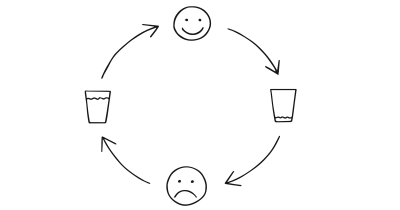
We are influenced by information that provides clarity on our actions
Levels + Goal-Gradient Effect
The Goal-Gradient Effect complements Levels by increasing user effort as they approach a new level. This is particularly effective in gaming and learning platforms where the anticipation of reaching a new level can drive increased engagement.

Use levels to communicate progress and gauge users' personal development
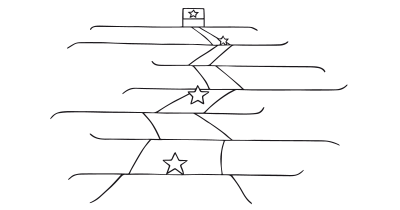
Our motivation increases as we move closer to a goal
Levels + Social Proof
Displaying levels publicly can leverage Social Proof to motivate users. When users see others achieving higher levels, they are more likely to increase their engagement to reach similar statuses.

Use levels to communicate progress and gauge users' personal development

We assume the actions of others in new or unfamiliar situations
Levels + Endowed Progress Effect
This combination works by giving users a head start in a level-based system, thus making the goal seem more attainable. For example, starting users off with a certain percentage of completion towards the first level can encourage continued participation.

Use levels to communicate progress and gauge users' personal development

Early help speeds up goal achievement
Levels + Autonomy Bias
People generally prefer to feel in control. Pair the structure of levels with the autonomy bias by offering users some level of choice within each level. Imagine a workout app that offers a few different workout routines at each level, allowing users to select the one that best suits their preferences. This fosters a sense of control while still guiding users towards achieving fitness goals within the level framework.

Use levels to communicate progress and gauge users' personal development
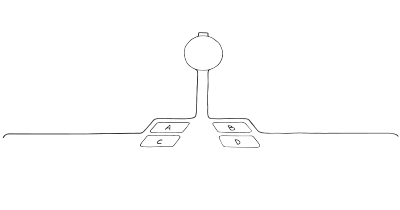
We strive to feel in control
Levels + Commitment & Consistency
The Levels pattern inherently encourages users to commit to progressing through the system. This aligns well with the commitment and consistency pattern. Imagine a language learning app that rewards users with bonus points or a streak multiplier for consistent daily practice within a level. This incentivizes users to maintain a regular learning habit and builds upon the commitment they establish by starting a new level.

Use levels to communicate progress and gauge users' personal development
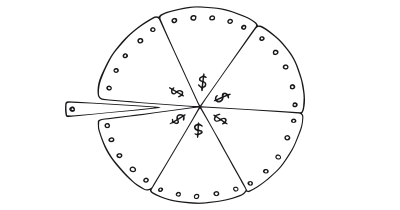
We want to appear consistent with our stated beliefs and prior actions
Levels + Scarcity Bias
People tend to value things more when they are perceived as scarce or difficult to obtain. Combine the structure of levels with scarcity by offering exclusive rewards or content only accessible at higher levels. This taps into user impatience and motivates them to progress quickly to unlock these desirable benefits. Example: Some streaming services offer exclusive content libraries or early access to new releases only to users subscribed to higher tiers (effectively levels) of their service.

Use levels to communicate progress and gauge users' personal development

We value something more when it is in short supply
Levels + Positive Mimicry
People are more likely to trust and emulate those they perceive as similar to themselves. Pair the sense of accomplishment from completing levels with positive mimicry by showcasing user profiles of individuals who have achieved high levels within your product. This allows users to identify with successful users and motivates them to strive for similar achievements through the level system. Example: Duolingo highlights users with impressive language learning streaks or those who have reached high fluency levels. This can inspire other users to follow suit and climb the leaderboard.�a�aBy combining the Levels pattern with other persuasive elements, you can create a user experience that is both engaging and drives long-term user investment in your product.

Use levels to communicate progress and gauge users' personal development

We learn by comparing our behavior with the actions of others
This persuasive pattern is part of the Persuasive Patterns printed card deck.
The Persuasive Patterns Card Deck is a collection of 60 design patterns driven by psychology, presented in a manner easily referenced and used as a brainstorming tool.
Get your deck!- The Art of Game Design - A Book of Lenses by Schell
- Flow: The Psychology of Optimal Experience by Csikszentmihalyi
- Fogg, B. J. (2009). A behavior design model for social media. Behavior Design, 1(1), 1-7.
- Xu, H., Raghubir, P., Fang, Y., Yuan, Y., & Li, S. (2012). The effects of electronic word-of-mouth (eWOM) valence, volume, and perceived credibility on brand equity. Journal of Interactive Marketing, 26(2), 133-144.
- Kapp, K. M. (2012). The gamification of learning and instruction: Input, process, and output. Advanced Learning Technologies (ALT), 1(2), 29-53.
- Hong Kong Education Bureau. (2018). Impact of e-Learning in Primary and Secondary Schools in Hong Kong.
- Kivetz, R., & Simonson, I. (2002). Earning the Right to Indulge: Effort as a Determinant of Customer Preferences Toward Frequency Program Rewards. Journal of Marketing Research, 39(2), 155-170.
- Xu, Y., & Huang, J. S. (2014). Effects of Price Discounts and Bonus Packs on Online Impulse Buying. Social Behavior and Personality, 42(8), 1293-1302.
- Mehta, R., & Zhu, R. (2016). Creating When You Have Less: The Impact of Resource Scarcity on Product Use Creativity. Journal of Consumer Research, 42(5), 767-782.
- Skinner, B. F. (1953). Science and human behavior. Macmillan. [1]
- Locke, E. A., & Latham, G. P. (2002). Building a critical mass of goal setting behavior: Theory, research, and practice. Research in Organizational Behavior, 25(1), 21-58.
- Locke, E. A., & Latham, G. P. (1990). A theory of goal setting & task performance. Psychological Bulletin, 90(3), 125-152. [2]
- Czikszentmihalyi, M. (1990). Flow: The psychology of optimal experience. Harper Perennial Modern Classics. [3]
- Ryan, R. M., & Deci, E. L. (2000). Self-determination theory and the facilitation of intrinsic motivation, social development, and well-being. American Psychologist, 55(1), 68.
